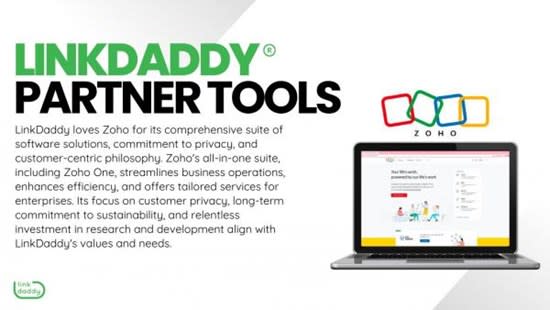Universal Cloud Service Explained: Solutions for Global Enterprises
Universal Cloud Service Explained: Solutions for Global Enterprises
Blog Article
Understanding the Different Types of Cloud Services and Their Uses
From Infrastructure as a Service (IaaS) to Software as a Solution (SaaS), each type of cloud solution serves a special purpose and supplies unique advantages. By exploring the nuanced performances and applications of each cloud service, one can navigate the complexities of cloud computing with accuracy and insight.
Infrastructure as a Service (IaaS)
Facilities as a Service (IaaS) supplies users with virtualized computer sources over the internet on a pay-as-you-go basis. This cloud computing version delivers essential IT infrastructure such as virtual machines, storage space, and networking without the requirement for organizations to buy and manage physical servers and data facilities. With IaaS, users can scale resources up or down based upon their needs, using adaptability and cost-efficiency.
Among the essential benefits of IaaS is its ability to swiftly stipulation and release framework parts, enabling services to respond promptly to altering demands and market conditions. By contracting out infrastructure management to the solution company, organizations can focus extra on their core organization tasks as opposed to taking care of the intricacies of equipment maintenance and upgrades.
Moreover, IaaS uses a high degree of reliability and safety and security, with companies normally providing robust information back-up, calamity healing, and cybersecurity procedures. This assists ensure that crucial organization procedures remain uninterrupted and information continues to be protected against potential threats. Cloud Services. On the whole, Facilities as a Solution simplifies IT procedures, improves scalability, and minimizes capital investment for organizations of all dimensions
System as a Service (PaaS)
Building upon the structure of Framework as a Service (IaaS), Platform as a Service (PaaS) supplies a comprehensive environment for designers to create, release, and take care of applications without the intricacies of underlying facilities administration. PaaS gives a platform with devices and solutions that simplify the advancement process, allowing designers to concentrate on composing code and structure applications instead than dealing with facilities issues.

Software as a Service (SaaS)
Software as a Solution (SaaS) changes the means companies access and utilize software application applications by providing them on a registration basis via cloud service providers. This cloud computing design gets rid of the need for organizations to keep and set up software application on private devices, as whatever is held and taken care of centrally in the cloud.
SaaS supplies an affordable solution for companies as they just spend for the software application they use without the added expenses of hardware maintenance or software program updates. It likewise supplies scalability, enabling business to conveniently adjust their software demands based Read Full Report on their demands.
Furthermore, SaaS applications can be accessed from any type of tool with an internet connection, advertising partnership and flexibility amongst remote groups. Security is a leading concern in SaaS, with companies implementing durable steps to shield data stored in the cloud.
Popular instances of SaaS consist of consumer relationship administration (CRM) software program like Salesforce, efficiency tools like Microsoft Workplace 365, and collaboration platforms like Google Work space. SaaS proceeds to get grip in business world as a result of its cost-efficiency, scalability, and ease.
Feature as a Solution (FaaS)
With the evolution of cloud solutions like Software application as a Solution (SaaS) simplifying software delivery, Function as a Solution (FaaS) represents a paradigm shift in how code is performed in a serverless setting. FaaS permits designers to write and perform specific functions or items of code in feedback to specific occasions without the demand to take care of the facilities. This serverless computer model makes it possible for developers to focus exclusively on creating code to apply particular performances, without worrying themselves with the underlying facilities or web server management.
One of the key advantages of FaaS is its ability to range immediately based upon the incoming work. Features are executed in stateless containers that are spun backwards and forwards as needed, ensuring optimum source utilization and cost-effectiveness. FaaS is especially useful for event-driven and microservices architectures, where code implementation is set off by occasions such as HTTP requests or data source updates. By extracting the facilities layer, FaaS streamlines growth, increases time to market, and improves overall agility in releasing cloud-native applications.
Storage as a Service (STaaS)
A fundamental element in cloud computer, Storage as a Solution (STaaS) offers users with a scalable and effective remedy for taking care of information storage needs. STaaS enables companies to keep and recover data from remote web servers by means of the internet, removing the requirement for on-premises equipment. This service provides versatility by enabling individuals to pay only for the storage space they use, making it a cost-efficient service for services of all sizes.

STaaS is especially advantageous for organizations with varying storage space needs, as it provides a reputable and safe and secure storage space remedy without the requirement for substantial ahead of time financial investments. By leveraging STaaS, companies can enhance their data monitoring procedures, enhance access, and improve data safety in a cost-efficient way.

Conclusion
In final thought, comprehending the various types of cloud services and their usages is essential for individuals and review companies looking to utilize the benefits of cloud computing. By utilizing the right cloud service, organizations can boost their effectiveness, scalability, and adaptability in managing official source their IT facilities and applications.
From Infrastructure as a Service (IaaS) to Software Application as a Solution (SaaS), each kind of cloud service serves an unique objective and provides unique benefits. Cloud Services. By checking out the nuanced capabilities and applications of each cloud solution, one can navigate the complexities of cloud computer with accuracy and insight
With the evolution of cloud services like Software as a Service (SaaS) simplifying software application distribution, Function as a Service (FaaS) represents a standard change in just how code is performed in a serverless environment.In verdict, understanding the different kinds of cloud services and their usages is essential for people and organizations looking to take advantage of the advantages of cloud computer. By utilizing the right cloud solution, companies can improve their performance, scalability, and adaptability in managing their IT infrastructure and applications.
Report this page